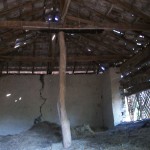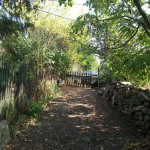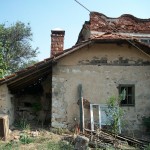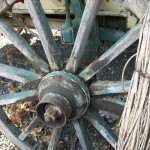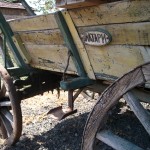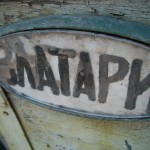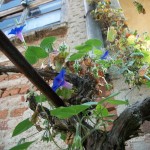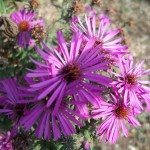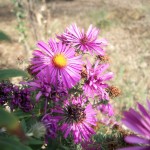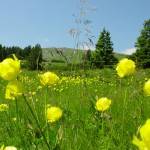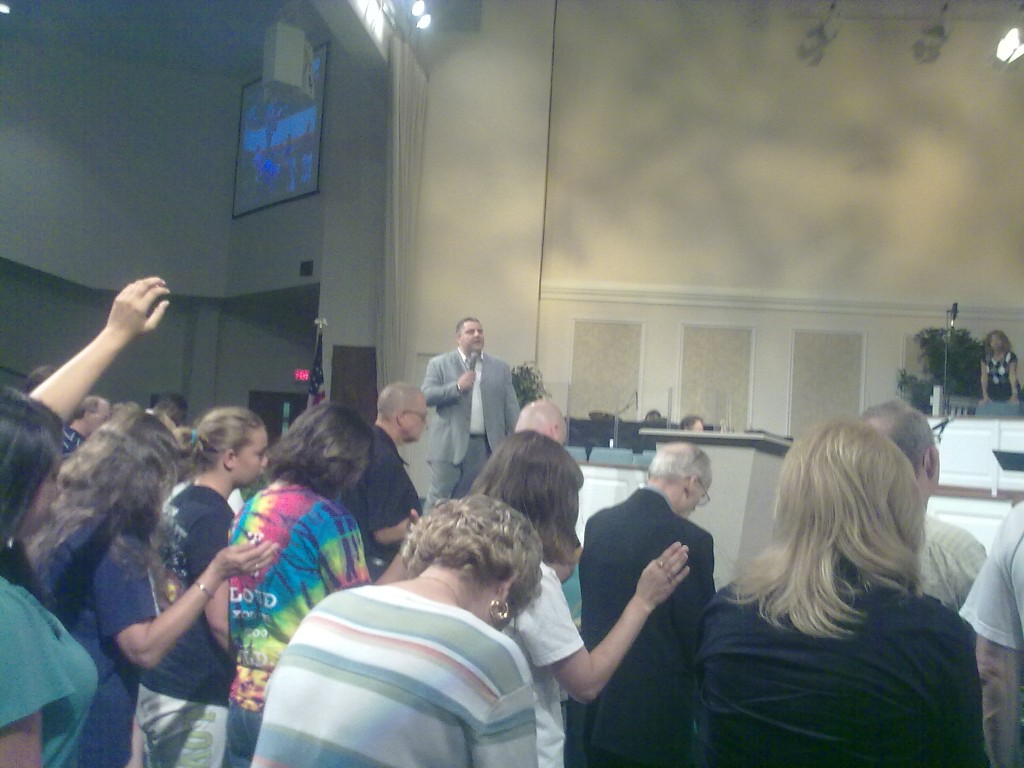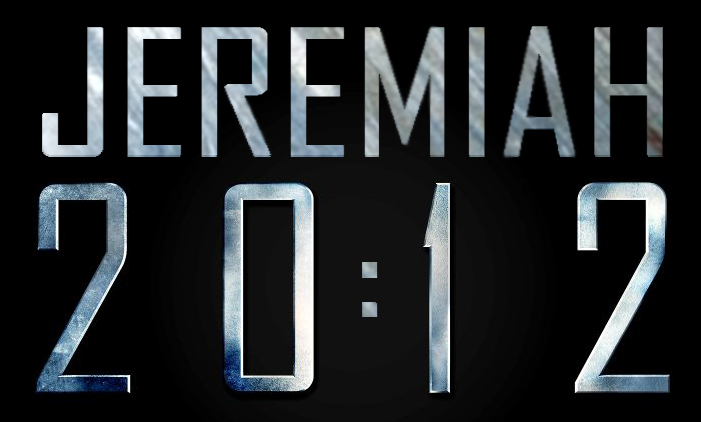Bulgarian Cookbook with Authentic Bulgarian Recipes Just Published
 For many years, friends and partners have been asking us about Bulgarian cuisine. What does it include? Does it taste good? What are our favorites and so on? It has been our experience that Bulgarian cuisine is very attractive to the Northern American tastes. Actually, we do not have a single friend or partner who have visited us and worked with us in Bulgaria who did not fall in love with our food.
For many years, friends and partners have been asking us about Bulgarian cuisine. What does it include? Does it taste good? What are our favorites and so on? It has been our experience that Bulgarian cuisine is very attractive to the Northern American tastes. Actually, we do not have a single friend or partner who have visited us and worked with us in Bulgaria who did not fall in love with our food.
After many requests, Kathryn has taken a personal interest in collecting our favorite Bulgarian recipes and putting them in this small cookbook. Now, these are much different than the modern Bulgarian diet that today includes fast food restaurants and junk food snacks. The book has 25 personally customized recipes of authentic Bulgarian cuisine. Not only that they carry the typical Bulgarian flavor, but each recipe comes with a personal story. You will enjoy cooking them with your family and friends most of all, you will enjoy serving and sharing them with everyone.
Bulgarian Village Motifs
Say Ye to the Righteous: “It shall be well”
Flowers of Bulgaria
Ministering at Stewart Road Christian Ministries Center
The Recollections of John Walker “Jack” Hilderbrand
From the Newsletter of THE ASSOCIATION OF THE DESCENDANTS OF NANCY WARD BELOVED WOMAN OF THE CHEROKEES
JUNE, 1994 Jack Hilderbrand Recollections
Edited and Annotated by David Hampton (Uncorrected)
John Walker Hilderbrand, better known as Jack, was born on 23 February 1818, the son of Peter Hilderbrand and Elizabeth “Betsy” Harlan Hilderbrand. His mother was a granddaughter of Nancy Ward. He came to the Cherokee Nation, Indian Territory in 1842, but did not remain, returning to Tennessee where he lived the rest of his life. In 1908, after he turned 90, he was interviewed at his home in Cleveland, Tennessee about events in early day Polk County, Tennessee. It is likely that he was the last surviving Cherokee in that area who had good memories of both before and after the forced removal in 1838-39. He probably provided Emmet Starr with much information about the family. His remembrances certainly led to the ability to identify Nancy Ward’s grave.
Naturally much of Hilderbrand’s recollections deal with white families who settled in Polk County after the Cherokees were removed. This information has been included here since it appears that there may be some relatives listed of those whites that intermarried with Cherokees. He also refers to some Cherokee sites by naming the current landowner. The punctuation and some apparent typographic errors make his list of names seem rambling and unclear.
Jack Hilderbrand died on 17 September 1910. There are surely some of his descendants who remain in Tennessee, but none of them have yet joined the Association of the Descendants of Nancy Ward. The typescript of his interview is in the Cleveland, Tennessee Public Library. There are many obvious typographical errors and some words of clarification are inserted in [brackets]. Some points of discussion, and correction are noted at the end of the article.
******************************************************************
SOME RECOLLECTIONS OF JACK HILDERBRAND AS DICTATED TO JACK WILLIAMS, ESQ. AND M. O. CATE, AT THE HOME OF HILDERBRAND, IN THE SUMMER OF 1908
My grandfather was sent here by the government to build a mill for the Cherokee on Hiawassee River where the Columbus farm is now. He was a Dutchman [German}, and this was before the Hiawassee purchase in 1819. He married a Cherokee woman whose father’s name was Woman Holder, in English, but I do not remember the Indian name. Her father was killed at the Horse Shoe battle in Alabama in the Creek War, Jackson War. My Grandfather first located at Knoxville. My grandfather first married a Dutch (German) woman and then married an Indian woman. By his first wife he had six children, Mike, Peter, my father, George, John and Sallie [Note 1]. By the Cherokee woman he had Dave, Nancy, Mary and Elizabeth [Note 2].
My father settled here where Ben McClary lives about 1807-1808. My father married Betsy Harland, a half-breed Cherokee woman. Her mother was a daughter of Nancy Ward, a full-blooded Cherokee woman. My father’s children were Barbara, Jim, Louis, Jenny, Katie, John, Ellis, Newton, Elizabeth and Minerva. My father lived here until after the Ocoee Purchase and then went to the Indian Nation. My brothers and sisters went to the Indian Nation, three of them married before they left [Note3]. I moved to the Nation in 1842 and returned here in 1844 and have lived here ever since.
The Ocoee Steal, or Treaty, was made in 1835 between Skimmerhorn [Note 4] who was sent here by the government, and John Ridge and his son, both full-blooded Cherokees [Note 5]. The young man was well educated, having obtained his education in New Jersey. These two men only represented the minority party. The Ross party was largely in majority, but the government forced them to stand to the treaty.
In 1837 Jack Walker was killed or shot down close to Cleveland, in Walker Valley [Note 6]; he lived two weeks. Jack Walker lived at the Lea Farm, three miles north of Cleveland, once owned by Montgomery. Walker lived in the log house situated where Fin’s house is a present. Jack Walker was shot out between the Old Hayes place on the Benton Pike and where he lived. Dick Johnson of Athens was with him when he was shot, and he reported that it was Jim Forman and Isaac Springston. They were put in jail at Athens but were afterwards turned out. While they were in jail the Cherokees had a called Council at Red Clay, Georgia. At that Council there was a collection made up and a short time after that Foreman and Springston come home, and it was said that old John Alston let them out for the money. Jim Foreman told me himself that a silver key let him out, By God, Sir. Being a boy then I didn’t understand it, but have afterwards thought that money was made up to let those men out. Jack Walker was one of the Ridge party and the others were against it. The government then gathered up the Cherokees in the Spring of 1838 and drove them off to the Territory.
(Mr. Hilderbrand here stated something about John Howard Payne being at a council of the Indians near Red Clay, Georgia. Perhaps Mr. Williams will remember something as to what he said. I did not take this down because I expected to return the next day and he said he would tell me more of what he knew of John Howard Payne.)
The Indians had three years to stay after the Treaty and the time was out on the 3rd of May 1838, and the Cherokees had made no preparation to move. They ordered out troops and brought them all into camp and kept them until they started with them. One of the camps was down close to the Boyd Place, where Mr. Bacon now lives, one was down near Chatata and one near Resaca, GA. They just gathered them up like cattle anywhere they found them and drove them into camp and then drove them out to the Territory. My father took one detachment. Ridge and son went out to the Nation in the Spring of 1838, before the others went in the fall. Ridge and his son were killed by the Ross party. Ridge was at a council, the first they held there, and remarked that it was just a resting for them and they thought that he would do like he had done here and would sell them out again, and a squad of Cherokees gathered together and decided they would kill him that night as he went home. But there was a white man with him and they couldn’t tell them apart and as they didn’t want to kill the white man they let them pass. They went back and had another council and decided they would set a night and kill twelve of the Ridge party, the leading men, and on the night selected a company went to the house of Ridge, Young John Ridge, and took him out of the house in daylight and told him what all he had done and that they had come there to kill him, and they did kill him. His wife begged for him, and some were in favor of sparing him but an old Indian named Ketcher said they came there to kill him and that they were going to kill him, and just cut him all to pieces with his bowie knife. Ketcher lived at Springtown in Polk County. This was in 1839, the year after they went there. Old John Ridge had gone to Van Buren, Arkansas after goods. The Ridges had a good store there and had workmen building a home and the workmen heard the conversation between them all. I was there once my self!
They took the road to Van Buren and met Old John, and when they saw him coming they hid and shot off a gun and an old fellow whooped a big Indian whoop and started toward them and they fired at him and shot him all to pieces. He had a negro with him and he was scared so that he put whip to the horses and started toward home, and when the horse struck the water in Sugar Creek the horse fell and the negro got him and went right back to where the Indians were. The Indians stopped him and sent him home to tell where Ridge was. The Indians then went on home to Tahlequah.
Tom Starr was a member of the Ridge party. The Ross party had killed his father and brothers and he then killed a large number of the Ross party, but they were unable to capture him. He would come in a kill some of them and then go away, but finally they made what they called a treaty of peace if he would come in and promise to be a good citizen they would pardon him. He did so and made a good citizen up until the war and then I don’t know what side he took. Walker was my first cousin and Tom Starr was my second cousin.
The first settlers in the First District of Polk County were in the Hiawassee Purchase. Commencing at the Chain Ferry there was Louis Armstrong, the man who cut the old Armstrong Ferry Road, also known as the Stock Road, it leaves the old Federal Road this side of Athens and joint it again about old Fort; Dr. Alexander once lived at the same place, then there was Bobby Cobb just this side of where Bill Gamble now lives; and right up the Creek above that Wash Price, Wash’s father first lived there and left the farm to Wash; Dr. Patton lived at the mouth of the Ocoee River; Old Billy Baker lived where Jim Calhoun now lives; Henry Bradford lived at Patty where Lovingood now lives, Cole Mayes lived right near him; Old John Ward lived there on the Creek on the main road from Columbus; Bobby Hood; Mosey Paris lived up near the Savannah farm; old man Mayfield settled where John Mayfield after wards lived who was the father of P. B. Mayfield, also Bill Mayfield and Weeks Mayfield, the only one now living and he now lives in Missouri; Gus Herd lived on the Savannah farm; P. B. Mayfield’s mother was a McJunken, a sister of Sam McJunken; George Corn, father of Wash Corn, Mrs. Shamblin is also his daughter; old Patterson lived close to the Savannah farm; and also old man Maddox. There were all old settlers in the First District before Polk County was organized, it being a part of McMinn county. Jimmy Slone also lived there. On the south side of the river Davy Dell Knox; Billy Biggs who was in the Legislature when the occupant law was passed, not as a member but as a lobbyist; New Taylor lived above the Columbus farm. He had Newt’s mother to move on this side of the river to hold the occupancy on the Joe Taylor farm for him. He furnished them and when the occupant law passed Newt goes in with Davy Dell Knox and got the money and entered it for hemself. They had a lot of trouble about it, and lawed and fought and plowed up each other’s corn, one would plant one day the other would plant the next day in the same field. Steve Blankenship lived just above Davy Dell Knox; Davy Dell Knox lived on the Norton place; Erby Boyd live at the mouth of the Ocoee River; Bobby McClary owned all the bend in the river where Ben McClary and Clemmer now lives; John White, my father-in-law, also lived in there; then up the creek a little piece Absolom Coleman lived; then Reuben Kancaster, Bobby Hood, Abraham Lillard, Billy Biggs, Newt Taylor, Donna Norris, John Paris, John Sawyer, Jesse Hillard, Alex McConnel, Josiah Harrison, John Williams, father of A. J. Williams, Clerk and Master, Tom McClary; John Crumble entered the land at the mouth of the river and sold it to Sim Browder; John Roy entered the land where Nichols now lives.
Around Benton, Nels Lawson entered the land where Wallace Clemmer now lives and Jim McKamy entered the land where Wid Clemmer now lives, and the land where Benton now stands; Jacky Johnson entered the land at what if called Woman Killer Ford, the Clemmer Ferry now; Zachariah Rose lived down below Benton Solomon Sunny lived about a mile south of Benton; Bill Higgins; Sammy Duggan; John Richie lived where Jake Munn now lives; Jake Howell lived where George Williams now lives; Evan Cambell entered where John and Andy Campbell now lives; Tommy Jones; Matt Marrow; Jason Matlock entered land where Abe Matlock owns; Travena Rogers; old Stubblefield entered land where Burns now lives; Parson Kimbrough; Moses Fergunson; John Hannah; John and Jim Shields built a mill on Ocoee River; Mike Hilderbrand entered the place where Chairman Williams now lives; Billy Taylor entered the land where John Taylor now lives.
The Indian Treaty was made at Newstota in Alabama [Note 7].
Jake Jackson was with Walker and claimed to have knowed Foreman and Springston when they [shot] Walker. They heard a shot and saw two men and started out to see who it was and then they shot Walker. My grandfather built a mill for the Cherokee and stayed there until after the Hiwassee Purchase and then he took a reservation through his wife and sold it to Woody Jackson and Sam McConnell. An Indian named Clapboard who lived at the Morelock Springs claimed that he and another Indian were the ones that shot Walker. Walker was shot in 1836 or 1837, at least after the of 1835 [Note 6]
John Ridge Jr. was educated at Cornwell, Conn.
Osceloa died and was buried at Sullivan Island, South Carolina. General Jessup was a United States officer and went to Florida to whip the Seminoles. Jessup came up here and got five Cherokees, Jess Bushyhead, John Spears, Daniel Colson, John Miller and _______ [Note 8.] He wanted these men because they understood the language of the Creek Indians. When they got the Indians out of Jessup’s camp he wanted them to go back and try to get Sam Jones and his warriors out, but they told him no, they were not going back because he had not kept his promise to make a treaty with them and they left Jessup there and came on back home.
When gathering up the Cherokees Nick and Doss and Diane and their mother were hid out and they stayed here. Doss died here during the war and Diane went to the Nation in after years with Minnie Lillard.
At the Horse Shoe Bend when the fight was going on between Jackson and the Creeks, the Creeks had canoes that they used and were about to whip Jackson, when Juny Lusky swam the river and got canoes and took the soldiers across who came up behind the Creeks and won the battle. For this deed the State of North Carolina gave him a section of land.
Brainard’s Missionary School was on Chickamauga Creek at Gordon’s Mill.
Ward Thompson was kill by Frank Green and Logan Frady in the fall of 1863 during the Civil War; Kinser was killed in the Gatewood raid at Benton; Tom Hainey was killed by Maranda Boran; Joe Smith, Henry Pick and his boys – the Gatewood Raiders killed these men in one place on Greasy Creek. A boy named Jones had a Yankee belt on an they killed him, he also had on Yankee clothes; Jasper Graddy was in the raid; they also killed Bate Armstrong and took a man from Sam Parks’ place and killed him.
My great-grand uncle. Five Killer, was the first Indian Cherokee that ever crossed the Hiwassee River and at Breedswell Glade he killed a buffalo, the last one ever killed in the country. This was right below the Pippinger place. Fifty or sixty were in the party that went out in the hunt and they stayed two or three months. This was long before the Hiwassee Purchase in 1819. These people came from about Echotah, near the mouth of Tellico River.
Five Killer died at what is known as the Five killer place where Doc Wright used to live, and is buried at the Hancock place [Note 9], along with his mother who was one hundred and forty years old at her death. They arrived at her age by the time of the Penn Treaty, when the Penn Treaty was made in Pennsylvania she was about twelve years old at that time. Those that were watching at her death bed – she was the grandmother of old Walker [Note 10] it was about dark when she died, in a little cabin, and when her breath left her the light!
that was in the room went out and a dim light was seen going out at the door, there being only one door in the cabin. Old John Hambright told me it was a fact, he being there at the time she died, not right in the house, but all those that were there told him that it was a fact. She was a good woman, saved many lives. When John Sevier made his raid down here he always spared her (Nancy Ward’s) town. She raised several white children. Her father was the chief that William Penn [made] his treaty with [Note 11]. John Hancock’s place and Five Killer’s place is the same place on which Nancy Ward is buried.
NOTE 1: He only listed five children here since Peter was his father. It is likely that the interviewer changed the number to six in the typescript thinking that his father referred to a person other than Peter.
NOTE 2: This listing of the children of John Hilderbrand is the obvious reference to Emmet Starr’s information on the Hildebrand family listed in his History.
NOTE 3: Married in the east were Barbara Hilderbrand and Hiram Linder, James Hilderbrand and Sarah Elizabeth Fields, and Catherine Hilderbrand and Levi Bailey.
NOTE 4: This treaty was negotiated by John F. Schermerhorn.
NOTE 5: Hilderbrand erroneously refers to Major Ridge as named John Ridge. The designation of the son John Ridge as a full blood is probably in error.
Note 6: The actual date of the shooting of John Walker was August 22, 1834.
NOTE 7: The treaty was made at New Echota, in Georgia.
NOTE 8: This man whose name was forgotten by Hilderbrand was likely Hair Conrad.
NOTE 9: Hilderbrand’s references to Five Killer, Nancy Ward’s son, are very interesting. While he does not actually say so, he implies that he knew Five Killer during his life. He also does not say anything about Five Killer’s family, but he may have been a source (perhaps with Ruth Starr Bean) who informed Emmet Starr that Five Killer had no descendants.
NOTE 10: Reference to Major John Walker, father of John Walker whose killing is referred to earlier.
NOTE 11: Hilderbrand gives some interesting information regarding the reputed advanced age of Nancy Ward and her father. Even Emmet Starr probably believed in her remarkable old age.
Though today we realize that the chronology of her descendants almost certainly puts her birth in the 1730s. William Penn purchased several tracts of land from the Delawares. Tradition says that Nancy Ward’s father was a Delaware. As William Penn died in 1718 and most of his treaties were made in the 1680’s, it is unlikely that Nancy Ward was 12 years old at the time of the “Penn Treaty”. Perhaps her father was 12 years old. More research needs to be done on the signers of the Delaware treaties in order to establish the possible paternity of Nancy Ward.
————————————————————————————
1851 Census of Cherokees east of the Misssissippi
Polk Co., TN
Family N0.11
1494.
John [Walker] Hilderbrand 33 mixed
(married to white woman since the treaty)
1495. Mary White Hilderbrand 12 d mixed
1496. Amelia Hilderbrand 10 d mixed
1497. Eliza Jane Hilderbrand 8 d mixed
1498. Emily Cherokee Hilderbrand 4 d mixed
1499. Ann Hilderbrand 6 d mixed
Ann is not listed in the Starr book “History of the Cherokee Indians” so that probably means that she did not live to be an adult.
This family is listed next to Michael Hildebrand and his grandson Michael.
John Walker is the son of Peter Hildebrand brother to the older Michael.
From CLEMMER’S COLUMNS (J.D. Clemmer, Benton, Tennessee) comes this description of the funeral. Most likely this information came from ‘Uncle Jack.’
The parents of Jack Hildebrand took the four-year-old boy to his Great-grand-mother’s funeral; he walked with his father, Peter Hildebrand along the ‘old war path’ from their home (now the McClary farm) across Four Mile Creek along the top of Wilson Hill, past Five Killer’s cabin. crossing the Ocoee at ‘Womankiller Ford’ then along the war path up a little valley just north west of Hancock Hill and turned aside to the left up the hill to an open grave soon to receive the remains of Nancy Ward. Uncle Jack remembered and wondered about the number of pots and pans placed in the grave to be used in the next world.”
THE CASE OF UNDERGROUND CHAPLAINCY IN BULGARIA
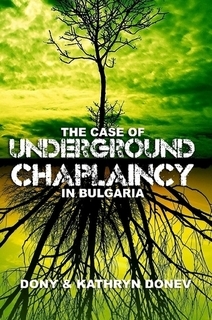 This book embodies documents, articles and essays dealing with the rediscovering and reestablishing of chaplaincy ministry in Bulgaria after the fall of the Berlin Wall in 1989, including the envisioning and establishment of the Bulgarian Chaplaincy Association and it’s proposal for the reestablishment of chaplaincy within the Bulgarian Armed Forces submitted to NATO’s Manfred Wörner Foundation in 2006, which subsequently led to the envisioning and establishment of the Master’s Program in Chaplaincy Ministry via the Bulgarian Evangelical Theological Institute and New Bulgarian University of Bulgaria in 2009.
This book embodies documents, articles and essays dealing with the rediscovering and reestablishing of chaplaincy ministry in Bulgaria after the fall of the Berlin Wall in 1989, including the envisioning and establishment of the Bulgarian Chaplaincy Association and it’s proposal for the reestablishment of chaplaincy within the Bulgarian Armed Forces submitted to NATO’s Manfred Wörner Foundation in 2006, which subsequently led to the envisioning and establishment of the Master’s Program in Chaplaincy Ministry via the Bulgarian Evangelical Theological Institute and New Bulgarian University of Bulgaria in 2009.
Ministry Projects Completed in 2011
Early in 2011 we called this year the year of the Bamboo – one in which projects which have been worked on for sometime now would finally come to a realization.
1. Master Program in Chaplaincy Ministry via Bulgarian Theological Evangelical Institute at New Bulgarian University
2. Gospel of Mark published for Christmas
3. Bible Camp 2011 as part of our Mobile School of Ministry completed for the second year in a row with over 75 students in attendance
4. Youth Event 11.11.11 completed in Chicago with a three-day youth conference and retreat for the Bulgarian Church in North America
5. First European Conference for Bulgarian churches and ministries held in London.
6. Book of Revelation verse-by-verse video series completed with the Bulgarian Evangelical Church of God in Chicago
7. Leadership Seminar held with the New Generation Church in the Silistra region of Northern Bulgaria
8. Internet and Personality Series held and published as a ministry webinar
9. Missions conferences with the Good Shepherd Church of God (FL) and the York Church of God (SC)
10. The (un)Forgotten: Research Series presented at the 2011 SPS meeting in Memphis, TN
11. 90 Years Pentecostal Revival in Bulgaria (Historical Series)
12. Lectures in Politics and Religion at University of Nebraska
13. In celebration of 15 years in web ministry we:
a. Launched a brand new server for our websites in June, 2011
b.Released a new version of Bibliata.TV in August, 2011
c. Updated WorldMissions.TV in September, 2011
b. Started a Christian Social Network called Bibliata.NET in November, 2011


